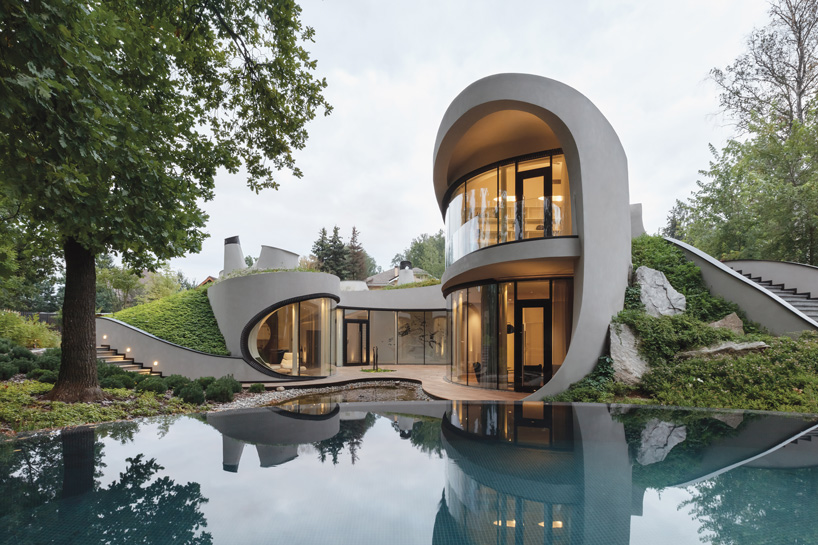A Comprehensive Introduction of Building Styles and Their Influence on Modern City Preparation and Growth
Architectural styles have actually long served as a mirror to the societal values and technological developments of their time, playing an essential role in shaping modern city planning and development. From the majesty of Neoclassicism to the utilitarian technique of Brutalism, each design has introduced special concepts that influence city visual appeals and capability.
Historical Review of Architectural Designs

As cultures transitioned via the Center Ages, Gothic design arised, identified by its verticality and detailed detailing, matching the spiritual ambitions of the period. The Renaissance noted a resurgence of classic perfects, combining art and style in ingenious ways that affected subsequent styles across Europe.
:max_bytes(150000):strip_icc()/Buildingdesigns-GettyImages-912482942-db55b3af711044a3a42ad1040c6711a9.jpg)
Today, architectural styles continue to develop, driven by globalization and sustainability issues, showing a dynamic interaction in between heritage and development. This historical introduction emphasizes the value of design as a mirror of societal evolution and as a stimulant for metropolitan advancement.
Key Architectural Styles Explained
The variety of building designs shows the myriad impacts that form our built setting, each symbolizing distinct features and cultural values. Key architectural styles include Classic, Gothic, Baroque, Modernism, and Postmodernism, each representing special historic contexts and aesthetic philosophies.
Timeless design, rooted in ancient Greece and Rome, highlights symmetry, proportion, and using columns (cda architects). On the other hand, Gothic design, thriving in the Center Ages, is characterized by pointed arches, ribbed vaults, and flying buttresses, producing an angelic high quality in sanctuaries. Baroque style, arising in the 17th century, is marked by splendour, intricate ornamentation, and a vibrant interaction of light and shadow
Modernism, which obtained momentum in the very early 20th century, focuses on function over form, using new materials like steel and glass to develop minimalist structures. Postmodernism, responding versus the austerity of Modernism, welcomes eclecticism and historic reference, typically integrating spirited aspects and irony.

Influence on Urban Preparation
In shaping the development of cities, building styles significantly affect urban preparation choices. The option of building design commonly dictates the appearances, performance, and total personality of metropolitan environments.
In addition, building designs can affect zoning policies and land use policies. Urban planners must consider the prevailing building fads when making areas, guaranteeing that brand-new developments harmonize with existing structures. This factor to consider fosters natural urban landscapes and improves community identification.
The application of certain architectural styles can additionally affect socioeconomic elements within a city. High-end contemporary styles may bring in affluent homeowners and services, leading to gentrification, while much more economical housing services may prioritize practical and sustainable layouts to accommodate varied populations. cda architects. Eventually, the interaction between building designs and metropolitan preparation develops vibrant cities that reflect both historical context and modern needs, forming the lived experiences of their citizens
Sustainability and Modern Architecture
Architectural designs play a crucial function in dealing with modern difficulties, specifically in the world of sustainability. As urban locations increase and ecological concerns magnify, contemporary style progressively welcomes sustainable design concepts that prioritize energy performance, source conservation, and very little environmental effect.
Contemporary architectural movements, such as biophilic layout and environment-friendly style, advocate for frameworks that harmonize with their surroundings, making use of natural materials and advertising biodiversity. These styles typically integrate renewable resource sources, such as solar panels and wind turbines, to lower reliance on nonrenewable fuel sources and reduced carbon impacts.
In addition, the assimilation of innovative innovations, such as wise building systems, enhances power monitoring, maximizing source use while ensuring occupant comfort. Cutting-edge water management approaches, including rain harvesting and greywater recycling, further add to sustainable city settings.
Especially, sustainability prolongs beyond ecological worries; it includes social and economic measurements too. By fostering area health and advertising inclusivity, modern-day building styles straighten with sustainable development goals. As a result, the development of building methods continues to form durable cities that not just meet the demands of the here and now yet likewise safeguard the future for generations ahead.
Neighborhood Involvement in Design
Neighborhood interaction in design works as an important bridge between architects and the populaces they offer, making sure that the developed environment reflects the needs and ambitions of its users. This joint procedure Full Report welcomes area participants to add Check This Out their understandings and choices, cultivating a feeling of possession and duty toward the areas they live in.
Efficient community involvement employs different methods, such as workshops, surveys, and public forums, to collect varied perspectives. These strategies promote a two-way discussion, allowing engineers to comprehend local contexts while empowering homeowners to voice their issues and desires. This inclusivity not only enhances the layout quality yet likewise advertises social equity by resolving the special obstacles dealt with by marginalized teams.
Furthermore, neighborhood involvement can result in innovative remedies that could not emerge in a traditional style process. By incorporating regional understanding and social worths, designers can develop spaces that resonate more deeply with individuals, enhancing functionality and sustainability. Eventually, focusing on neighborhood interaction in layout procedures results in settings that support social interactions, assistance well-being, and reinforce area ties, therefore playing a pivotal duty fit contemporary city landscapes.
Conclusion
Building styles have actually profoundly affected contemporary city preparation and development, showing progressing cultural and technological contexts. The assimilation of historic appearances with modern requirements fosters urban environments that focus on sustainability and community interaction. As cities proceed to expand and adjust, the continuous discussion between architectural heritage and modern-day design concepts will certainly continue to be important in producing inclusive, lively spaces that enhance lifestyle useful source and promote social equity. The future of urban development joints on this harmonious equilibrium.